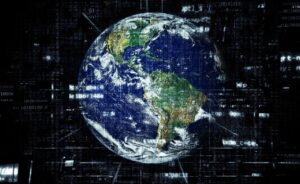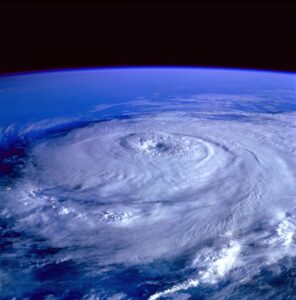
A radical transformation is taking place in legal systems around the world, challenging centuries of anthropocentric tradition. The movement for the rights of nature, which first gained momentum in Ecuador in 2008 when the country became the first to include these rights in its constitution, is now spreading through global courts and legislatures. This innovative legal paradigm recognizes ecosystems, rivers, and species as subjects of law, with legal protection equivalent to that granted to legal entities. By 2024, more than 30 countries already have some form of legal recognition of the rights of nature, from one-off court rulings to sweeping constitutional amendments.
The case of the Whanganui River in New Zealand is perhaps the most emblematic example of this trend. In 2017, after 140 years of legal wrangling with the local Maori population, the river was recognized as an “indivisible living entity” with all the rights, powers, duties and responsibilities of a legal entity. This precedent has paved the way for a number of similar decisions in several jurisdictions. However, the practical implementation of these rights has proven complex, raising fundamental questions about how to balance environmental protection with economic development, and how to operationalize the legal representation of non-human entities in judicial systems designed to resolve disputes between people.
The Global Expansion of the Rights of Nature

The adoption of the rights of nature has followed different paths in different regions of the world. In Latin America, the focus has been mainly constitutional. Ecuador has not only incorporated the rights of nature into its Magna Carta, but has also seen its Constitutional Court rule in 2021 that these rights apply even in specific protected areas, such as the Los Cedros Protective Forest. Colombia followed a similar path, with its Supreme Court recognizing the Colombian Amazon as a subject of rights in 2018, ordering the government to take immediate action to reduce deforestation.
In North America, the movement has advanced mainly through municipal and state legislation. Toledo, Ohio, passed the Lake Erie Act in 2019, granting the body of water the right to “exist, flourish, and evolve naturally.” That legislation, driven by recurring toxic algae crises in the lake, was later struck down by a district court, demonstrating the legal tensions surrounding the issue. Meanwhile, in Oceania, in addition to the Whanganui River precedent, Australia saw in 2021 the first judicial recognition of the rights of a specific ecosystem – the Central Tasmanian Forests – although this decision was later reversed on appeal.
What makes this expansion particularly interesting is the diversity of actors behind it. While in some cases it is indigenous communities who lead the struggle (such as the Maori in New Zealand or the U’wa in Colombia), in others it is groups of citizens (Toledo) or even progressive judges interpreting existing constitutions in an innovative way. This plurality of paths suggests that the movement for the rights of nature is not a passing fad, but rather a fundamental reconfiguration in the relationship between legal systems and the environment.
Impacts and Challenges in Practice
The concrete implementation of the rights of nature has produced mixed results and raised complex issues. In Ecuador, the Rio Vilcabamba case in 2011 marked the first time a court directly applied the rights of nature, ordering reparation for damage caused by roadworks. However, more than a decade later, the effectiveness of this decision remains questionable, with reports showing that many of the measures ordered were never fully implemented.
In India, the rights of nature have taken an unexpected turn. In 2017, the courts of Uttarakhand declared that the Ganges and Yamuna rivers, considered sacred, were “living entities with legal status”. However, that decision was quickly overturned by the Indian Supreme Court, which expressed practical concerns about how to implement such a determination – including questions such as who would represent the rivers in court and how to deal with unintended consequences, such as the theoretical possibility of suing the rivers themselves for damage during floods.
These cases illustrate the main challenges in the operationalization of the rights of nature:
- Legal Representation: How can ecosystems be adequately represented in legal proceedings? Some jurisdictions have created figures such as “guardians” or “trustees,” while others entrust community groups or government agencies with this responsibility.
- Enforcement of Judgments: Even when courts issue orders favorable to nature, implementation often runs into practical and policy limitations. The case of the Colombian Amazon is emblematic – despite the historic decision, deforestation rates continued to rise in the following years.
- Conflict with Human Rights: In some situations, the rights of nature may come into tension with basic human needs. Essential infrastructure projects for poor communities, for example, can be blocked because they affect ecosystems with recognized rights.
Conclusion

The movement for the rights of nature represents one of the most radical and promising legal innovations of the twenty-first century. While it still faces significant implementation challenges, its global growth suggests that we are witnessing not a fad but a fundamental transformation in the way legal systems conceive of the relationship between humanity and the environment.
The next few years will be crucial in determining whether the rights of nature will become an effective conservation tool or will remain primarily symbolic statements. The development of practical mechanisms for legal representation, monitoring and enforcement will be crucial. Equally important will be building bridges between this movement and other approaches to environmental governance, creating hybrid systems that can deal with real-world complexities.
The case of the Olivares glacier in Chile, where in 2023 for the first time a glacier filed a lawsuit against a mining project (through its legal representatives), may indicate the next chapter of this legal revolution – one where not only rivers and forests, but geological and climatic elements further broaden the horizons of environmental law. What is at stake is not just the protection of specific ecosystems, but the fundamental redefinition of humanity’s place in the natural world.

Sem comentários